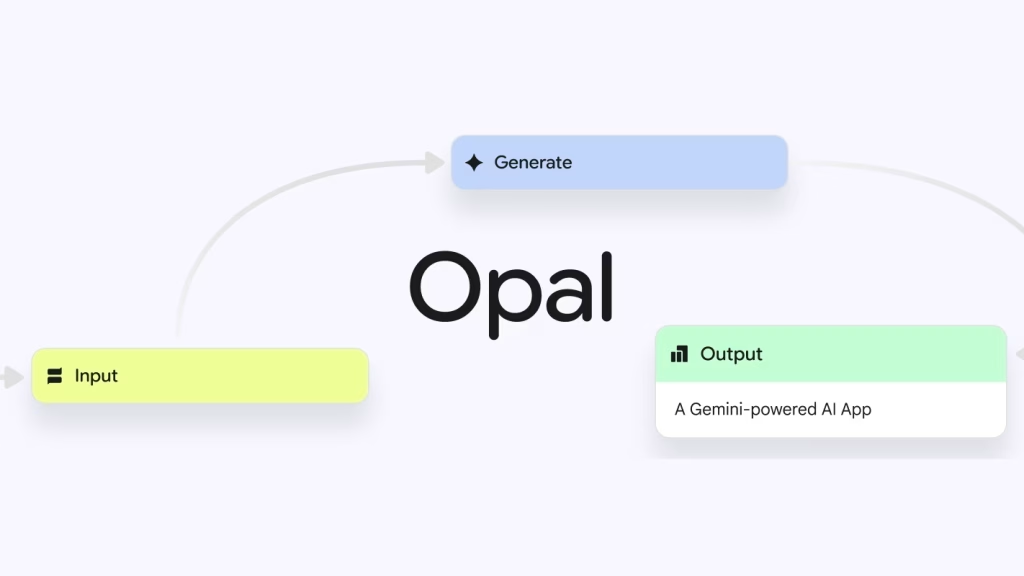Google Opal: Unpacking the "Vibe-Coding" Revolution for Web Apps
The tech world, bless its ever-churning heart, never stands still, does it? Just when you think you've got a handle on the latest AI development, Google goes and drops something new that makes you pause and think, "Wait, what just happened?" That's exactly how I felt hearing about Opal, their new "vibe-coding" tool currently making waves in Google Labs. Available exclusively in the U.S. for now, this isn't just another AI coding assistant; it's a fascinating step towards democratizing web app creation with little more than a few conversational prompts.
What Exactly is "Vibe-Coding" with Opal?
The Democratization of Development: A Seismic Shift?
This isn't Google's first rodeo with AI in coding, of course. We've seen tools like Gemini 2.5 Pro assist developers with complex code generation. But Opal feels different. It's squarely aimed at the non-developer, the hobbyist, the small business owner, or even the student who has a brilliant idea but lacks the traditional coding chops to bring it to life.
For years, the no-code and low-code movements have promised to empower more people to build. Tools like Webflow, Bubble, and others have made significant strides. But Opal seems to take it a step further by integrating advanced AI to interpret natural language. This could genuinely lower the barrier to entry to an unprecedented degree. Imagine a small local bakery needing a simple online order form or a community group wanting a quick event registration page. Historically, they'd either pay a developer a hefty sum or spend weeks learning the ropes. Now? Maybe just a few minutes with Opal. It's a powerful vision, and frankly, it's exciting to watch unfold.
How Does Opal Likely Work Under the Hood?
While Google hasn't revealed all the architectural secrets (and why would they?), we can infer a few things. At its core, Opal is almost certainly powered by a large language model (LLM) that's been specifically fine-tuned for understanding application requirements and generating corresponding web components. It's not just generating raw code; it's likely orchestrating a series of pre-built modules or components, much like a sophisticated visual builder.
Implications and the Road Ahead
The potential impact of Opal is immense. On one hand, it could unleash a wave of creativity, allowing countless individuals to build tools that solve their specific problems without needing to hire an expensive developer. This could foster innovation in unexpected corners. For businesses, it means faster prototyping and potentially reduced development costs for simpler internal tools or customer-facing mini-apps.
Yet, we've gotta be realistic, right? While Opal is fantastic for "mini apps," it's unlikely to replace skilled software engineers for complex, enterprise-grade applications anytime soon. Building robust, scalable, secure, and highly customized systems still requires deep technical expertise. Debugging, performance optimization, integrating with legacy systems – these are challenges that natural language prompts alone probably can't solve.
Furthermore, being in Google Labs and U.S.-only means it's still in its early stages. There will be limitations, bugs, and a learning curve for users to understand how to best prompt the system. But the fact that Google is investing in this "vibe-coding" approach signals a clear direction for the future of software development. It's a future where the line between "user" and "creator" continues to blur, and that, my friends, is a future I'm genuinely looking forward to exploring.
The Next Frontier for App Creation
Opal represents a significant step in the ongoing journey to make technology creation more accessible. It’s not just about writing code faster; it’s about enabling more people to participate in the digital economy and solve problems with custom solutions. As it evolves, it'll be fascinating to see how it integrates with other Google services, what kind of "mini apps" users actually build, and if it truly leads to that "seismic shift" many experts are predicting. My bet? It's going to shake things up quite a bit.
